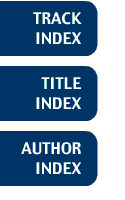
Track: State/Local Government, Cadastral, Land Records
Use of ArcView GIS for Community Indicator Development

Grant McMurranIndicators that measure a community's performance are important for civic leaders and citizens to build a better future. Traditional indicators typically fail to capture the importance of geography; GIS can improve upon community indicator development by adding a third dimension to the measurement process. We will present a number of ways we have used ArcView GIS Version 3.0, ArcView Spatial Analyst, ArcView Network Analyst, and ArcView Internet Map Server to develop indicators. Basic indicators such as population, household income, education attainment, and consumer spending can be presented with ArcView GIS with the result of finding geographic clusters. We can geocode origins and destinations from travel diaries to determine where people travel. From these pattern clusters, we can determine which areas of a city are frequented and how that pattern changes depending on where a driver lives. We have conducted surveys asking respondents which parts of their neighborhood they think are assets and which parts are liabilities. We then used ArcView Spatial Analyst to overlay survey responses to determine the composite assets and liabilities. We have used GIS to measure accessibility of commercial centers to a neighborhood. By using ArcView Network Analyst, we have measured all residential zoned areas that are within one-quarter mile walking distance to commercial zoned areas. Finally, ArcView Internet Map Server can be used to make these findings accessible to community leaders and the general public.
Grant McMurran
Claremont Graduate Univ Research Inst
250 First St
Claremont, CA 91711
USA
Telephone: 909/399-5650 x315
Fax: 909/399-5658
E-mail: grant.mcmurran@cgu.edu